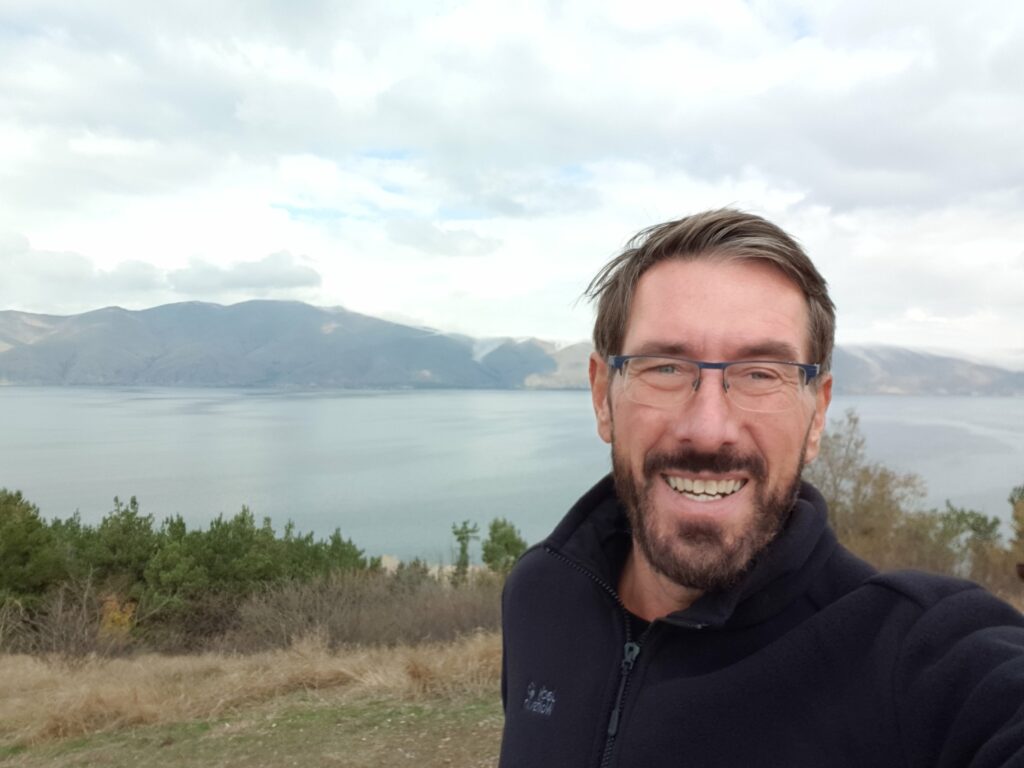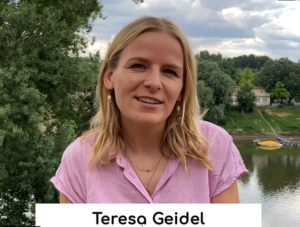
Hiding WEFE nexus trade-offs for ecosystems: the Guadalquivir showcase
The draft 2022-2027 Guadalquivir River Basin Management Plan captured the attention of Guido Schmidt from Fresh Thoughts over the past weeks and he wrote the following article to showcase some of the key takeaways.
My interest stems from my long-time work in Andalusia (Spain), aiming to preserve the outstanding natural values of the Doñana wetlands and the Guadalquivir river estuary. Doñana is an excellent example of how freshwater ecosystems are heavily declining on the planet, despite or possibly because we strongly rely on their services.
More than 20 years after the adoption of the Water Framework Directive, this plan was expected to be the long-promised ambitious strategy of the competent authorities to achieve good status of water bodies and support ecosystem conservation. The main challenge is to fix water quantity, as the basin has a water availability-demand deficit; this primarily requires improving the nexus between water, irrigation and ecosystems.
I have revised the latest version of the draft plan to assess if this nexus interaction is properly. My overall conclusion is that in spite of the many studies and assessments conducted in recent years, the main gaps remain as in 2009 when the first plan was drafted: a) the official water balance is not credible, b) irrigation area expansion is fostered, although not openly c) ecosystems are poorly accounted for, and d) the plan is not climate resilient.
The water balance of the Guadalquivir basin
The water quantity section of the draft RBMP is possibly the longest and the most relevant to stakeholders. It includes water balances according to the national legislation for the whole river basin district and sub-basins. Water use by irrigation agriculture (881,000 hectares, with 56% dedicated to olives) is by far the largest, accounting for 86% of the total. According to the plan’s statements, there has been a sharp decrease in water consumption by agriculture, mainly because of the EU-subsidized irrigation efficiency investments over the past decade. The possible rebound effect (improved water use technology may increase water depletion if not deployed in pair with appropriate governance measures) has only partly been assessed (e.g. Berbel et al., 2018, ECA, 2020).
According to the official figures reported in the Plan, the current basin’s water deficit is at 200 million m3/year, and water availability will decrease by 2-9% over the coming 5 years. However, in my understanding, the deficit is much larger as officially recognized, due to the following features:
- Water consumption for illegal uses is not accounted for, nor estimated.
- Water abstractions from groundwater (currently 325,000 hectares) are usually not metered (despite existing regulation) and are significantly underestimated, resulting in severe depletion e.g. in the Doñana area
- The reuse of treated urban wastewater is double-counted for
Minor abstractions (<7,000 m3/yr) are not accounted for, whilst 12,040 new such authorizations have been awarded between 2018 and 2020
The plan’s water balances are usually based on estimations of irrigation water consumption. For example, the red berries’ net water consumption is estimated at 4,500 m3/ha/yr, which multiplied by the efficiency factor (0.857) results in a gross water allocation of 5,248 m3/ha/yr. However, research on irrigation practices in 22 farms (García Morillo et al., 2015) shows an average abstraction is 7,039 m3/ha/yr, which is much higher than the official gross water allocation and drives a severe mismatch between theoretical water balances and water being consumed in practice. As another example, the Irrigator Community Almonte-Marismas II-17 failed in 2020 to access subsidies for irrigation efficiency because their expected improved water use was still above the official limit (Junta de Andalucía, 2020).
Regarding the water reuse of treated urban wastewater in irrigation, the plan foresees to develop 20,000 ha of new irrigation farms in the upper catchment area. However, the return flows from urban water users (80%) has not been reduced when compared to previous plans, also indicating errors in water balance computation.
Ever-growing irrigation areas
Officials of the River Basin Authority and its Twitter account stated during the 2022 severe drought their commitment to “no single hectare of irrigation expansion”, recognizing the lack of water to supply all existing demands. However, the new plan foresees another 46,000 hectares to be irrigated by 2027 (without accounting, obviously, for the illegal land transformations, widely extended because of lack of control and enforcement).
According to the plan, even with such expansion, the overall irrigation water consumption will be reduced because of more efficiency investments, now primarily targeting the (often non-metered) groundwater-based areas. The plan also includes a curious statement about the fact that irrigation shall reduce even further its water use by another 9% between 2027 and 2039 due to the reduced water availability, though no strategy is outlined on how to adapt to climate change.
Freshwater ecosystems – the “looser”
The situation of many water bodies in the Guadalquivir basin remains frustrating for all those who enjoy swimming, angling or canoeing, insufficient for the conservation of freshwater ecosystems, their habitats and species protected by the EU and threatening those economic activities – like fisheries – who depend on the ecosystem services delivered by rivers, lakes and wetlands in good status.
Overall, only 62% of surface and 48% of groundwater bodies are in good status, 32 groundwater bodies are in poor quantitative status. Over the past 6 years, 12 groundwater bodies have worsened their status due to over abstraction.
The Guadalquivir estuary is composed of 13 water bodies, with only one of them in good condition. Science has indicated since long that an increase in the freshwater flows from the basin to the estuary is crucial for achieving good status and boosting its nursery function for the coastal fisheries (Diez-Minguito et al., 2018); however, flows have decreased by 60% over the past 70 years (CSIC, 2010).
According to the RBMP, the prescribed monthly ecological minimum flow of the estuary is only 4-13 m3/s, which can be compared to average past flows of 31-248 m3/s during the 1942-1994 period. They are not based on an assessment of the water needs of the estuary’s ecosystem; such studies are foreseen to be undertaken by 2027, but the plan has limited credibility: a similar study was already included in the previous 2016-2021 plan and not executed.
The knowledge gap – 20 years after the adoption of the WFD! – does not only affect the estuary. So far, only minimum flows for rivers have been defined in the Guadalquivir basin. Other eflow components (e.g. maximum flows, change rates or high flows, as considered in Spanish regulations) are still being studied and promised to be implemented during the coming period. For lakes and wetlands, there are still “insufficient data” available and the RBMP foresees further research funded with € 400,000 by 2027.
Even worse, where minimum ecological flows have been established, these might be largely insufficient to ensure the preservation of habitats and species: in 198 water bodies, the minimum flows fixed are <20% of the mean annual runoff (Mezger et al., 2019), a usual reference for the significance of such flows. In addition, Mezger et al. (2019) show that even where minimum ecological flows are legally prescribed, they are often not complied with (see figure).

Conclusions: What is the future of Guadalquivir?
Over the past 100 years, the management of the Guadalquivir river basin has focused on promoting irrigation agriculture, with benefits for the local economy and deteriorating water resources and ecosystems. This trend continues in 2022, with the adoption of the third cycle RBMP.
The nexus interactions between water-energy-food-ecosystems are well known in this basin and have been assessed and discussed with authorities and stakeholders, though the main focus has been on water-energy-food (e.g. Martínez et al., 2018). Few changes have been made in water management itself. There is a major gap in addressing the trade-offs for ecosystems in research, and more transparency and ambition are required from the RBMP, especially in light of climate change.

About the author: Guido Schmidt works since 2014 at Fresh Thoughts Consulting GmbH as Senior Policy Expert. He is German PhD with 30 years’ experience in the area of water, climate adaptation and environmental policy, planning and implementation.
References:
- Berbel, J., Gutiérrez-Martín, C., Expósito, A., (2018) Impacts of irrigation efficiency improvement on water use, water consumption and response to water price at field level. Agric. Water. Manag, 203, 423-429
- CSIC (2010) Propuesta metodológica para diagnosticar y pronosticar las consecuencias de las actuaciones humanas en el estuario del Guadalquivir”. Disponible en: http://bit.ly/EstudioEstuario
- Díez-Minguito, M., Serrano, M., & Cobos, M. (2018). Multi-decadal trend analysis of tidal constituents in the Spanish estuaries.
- European Court of Auditors (2020) “Sustainable water uses in agriculture: CAP funds more likely to promote greater rather than more efficient water use. Report 20.
- Jorge García Morillo, Manuel Martín Arroyo, Emilio Camacho, Juan Antonio Rodríguez Díaz y Pilar Montesinos. ‘Toward precisión irrigation for intensive strawberry cultivation’. Agricultural Water Management. 151 (2015). 43-51.
- Junta de Andalucia (2020): INFORME DE LA COMISIÓN DE SEGUIMIENTO DEL PLAN ESPECIAL DE ORDENACIÓN DE LAS ZONAS DE REGADÍO UBICADAS AL NORTE DE LA CORONA FORESTAL DE DOÑANA Y DEL PROGRAMA DE MEDIDAS COMPLEMENTARIAS.
- Martinez, Pilar, Maria Blanco, and Bente Castro-Campos. 2018. “The Water–Energy–Food Nexus: A Fuzzy-Cognitive Mapping Approach to Support Nexus-Compliant Policies in Andalusia (Spain)” Water 10, no. 5: 664. https://doi.org/10.3390/w10050664
- Mezger, G., De Stefano, L. & González del Tánago, M. Assessing the Establishment and Implementation of Environmental Flows in Spain. Environmental Management 64, 721–735 (2019). https://doi.org/10.1007/s00267-019-01222-2



